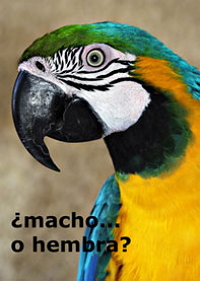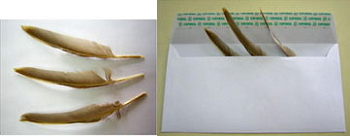SEXING OF BIRDS USING MOLECULAR DNA MARKERS
|
Description |

DNA markers provide a simple method of sexual determination based on specific differences in some genome sequences of the two sexes.
Some species of birds do not show a large morphological difference between the sexes. When it comes to pets or endangered birds, knowing the sex of individuals is important in establishing captive breeding programs. DNA markers provide a simple method of sexual determination based on specific differences in some genome sequences of the two sexes.
|
How does it work |

Electrophoresis gel for the sexing of 4 individuals: 3 females and 1 male.
The technique relies on the amplification of an internal (intron) gene sequence of the chromo-helicase DNA binding protein (CHD protein) by the PCR (Polymerase Chain Reaction) technique, using specific primers. This gene is found in the sex chromosomes, which in birds are called Z and W, being, unlike what occurs in mammals, females that have two different sex chromosomes - ZW - while males have two equal chromosomes - ZZ. This segment of DNA, which does not translate into protein, is very different in both sexes and can be distinguished by simple electrophoresis.
The biological material needed to apply this technique consists of two to three feathers, better if they are large growing feathers, plucked from the bird with its full barrel. They simply fit into an envelope, separating them from different individuals and are mailed to the lab.
Our laboratory will carry out the analysis and prepare a report with the technical details and the results of the sex.
|
Advantages |

Preparation of feathers for shipment.
The sexing of birds using this technique is fast and reliable. In addition, operations such as taking samples and sending them to the laboratory are extremely simple and do not require any special devices. On the other hand, the manipulation of animals is minimal in order to avoid stress and any kind of damage.
|
Where has it been developed |
This technology is developed in the Department of Genetics of the Faculty of Biological Sciences. We have experience in the development of molecular markers in different animal species.
|
Contact |
|
© Office for the Transfer of Research Results – UCM |
|
Descargas PDF |
|
Classification |
|
Responsible Researcher |
Pilar Arana: mparana@ucm.es
Department: Genetics
Faculty: Biological Sciences


